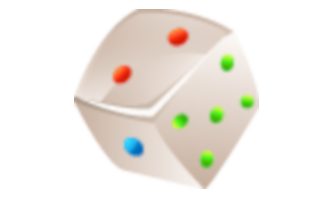Land Habitats
Science, Grade 2
Land Habitats
Study Guide

Land Habitats
Flash Cards

Land Habitats
Quiz

Land Habitats
Worksheets

Land Habitats
Games

Study Guide Land Habitats Science, Grade 2
❮
1
/
6
❯
LAND HABITATS What is a Habitat? A habitat is the place where plants and animals live. Animals need a place to live in order to survive. Different animals are found in different habitats. Habitats can be very large or very small. A habitat provides food and shelter for all living things that live there. Let’s check what we have learned so far: What is a habitat? Woodland Forest A woodland is land covered with trees and shrubs. Trees provide homes for some animals and leaves provide shade for animals too. Different types of Woodland forests are found in different regions of the world. The temperature and the amount of rain affect the types of plants and trees that will grow in a region. © Copyright NewPath Learning. All Rights Reserved. Permission is granted for the purchaser to print copies for non-commercial educational purposes only. Visit us at www.NewPathLearning.com.
Types of Woodlands Temperate Deciduous Forests Temperate deciduous forests grow in cool and rainy areas. Trees in this type of forest lose their leaves in the fall and grow new leaves every spring. © Copyright NewPath Learning. All Rights Reserved. Permission is granted for the purchaser to print copies for non-commercial educational purposes only. Visit us at www.NewPathLearning.com.
Taiga The taiga is a forest with mostly evergreen trees. The taiga is found in the very cold areas of the Earth. Rain Forests Rainforests are very thick, warm, and very wet forests. Tropical rainforests receive A LOT of rain every year. We are talking 160 to 400 inches/400-1000 cm in some rain forests. © Copyright NewPath Learning. All Rights Reserved. Permission is granted for the purchaser to print copies for non-commercial educational purposes only. Visit us at www.NewPathLearning.com.
Tropical rainforests are located around the equator. Tropical rainforests are divided into four main layers: A. Forest floor – made of soil, tree roots, and mushrooms B. Understory – includes young trees and shrubs C. Canopy – tops of many trees in the forest (not the tallest trees though) D. Emergent – tops of the tallest trees in the forest Let’s check what we have learned so far: Name one type of woodland area. The Plants of the Rainforest Millions of plants and animals live in the rain forest. The plants of the rain forest generate much of the Earth's oxygen. Plants found in the rain forest supply A LOT of oxygen to the world. Rain forest plants also are used for food, medicine, and clothing too. The Amazon rain forest in South America is the world's largest rainforest. Let’s check what we have learned so far: What is the weather like in a rainforest? © Copyright NewPath Learning. All Rights Reserved. Permission is granted for the purchaser to print copies for non-commercial educational purposes only. Visit us at www.NewPathLearning.com.
Desert Deserts are very dry places – they get little or no rain fall. Deserts can be very hot in the day and can get very cold at night. The ground of a desert is often rocky or sandy. The plants and animals that live in the desert have to survive with less water: o Plants, like cactus plants, can grow well in the desert. They store water in their thick, plump stems. They often have sharp spikes so animals do not eat them. o Animals that live in the desert have adaptations to cope with the lack of water, the extreme temperatures, and the shortage of food. Let’s check what we have learned so far: What is a desert? © Copyright NewPath Learning. All Rights Reserved. Permission is granted for the purchaser to print copies for non-commercial educational purposes only. Visit us at www.NewPathLearning.com.
Artic The Arctic is a very cold, very windy, and usually very snowy place to live that is close to the North Pole! Many animals that live in the Arctic have thick fur that keeps them warm and a lot of body fat that keeps them warm too! Some artic animals have fur that changes to white during the winter so they can blend in with the snow – this is called camouflage. Some Arctic animals hibernate during the coldest season in the Arctic. Many animals live in the Arctic during the summer but head right out of there when it starts getting REALLY cold during the winter. When animals go somewhere else for the winter then return in the spring or summer, it is called migrating. Let’s check what we have learned so far: What is camouflage? © Copyright NewPath Learning. All Rights Reserved. Permission is granted for the purchaser to print copies for non-commercial educational purposes only. Visit us at www.NewPathLearning.com.
